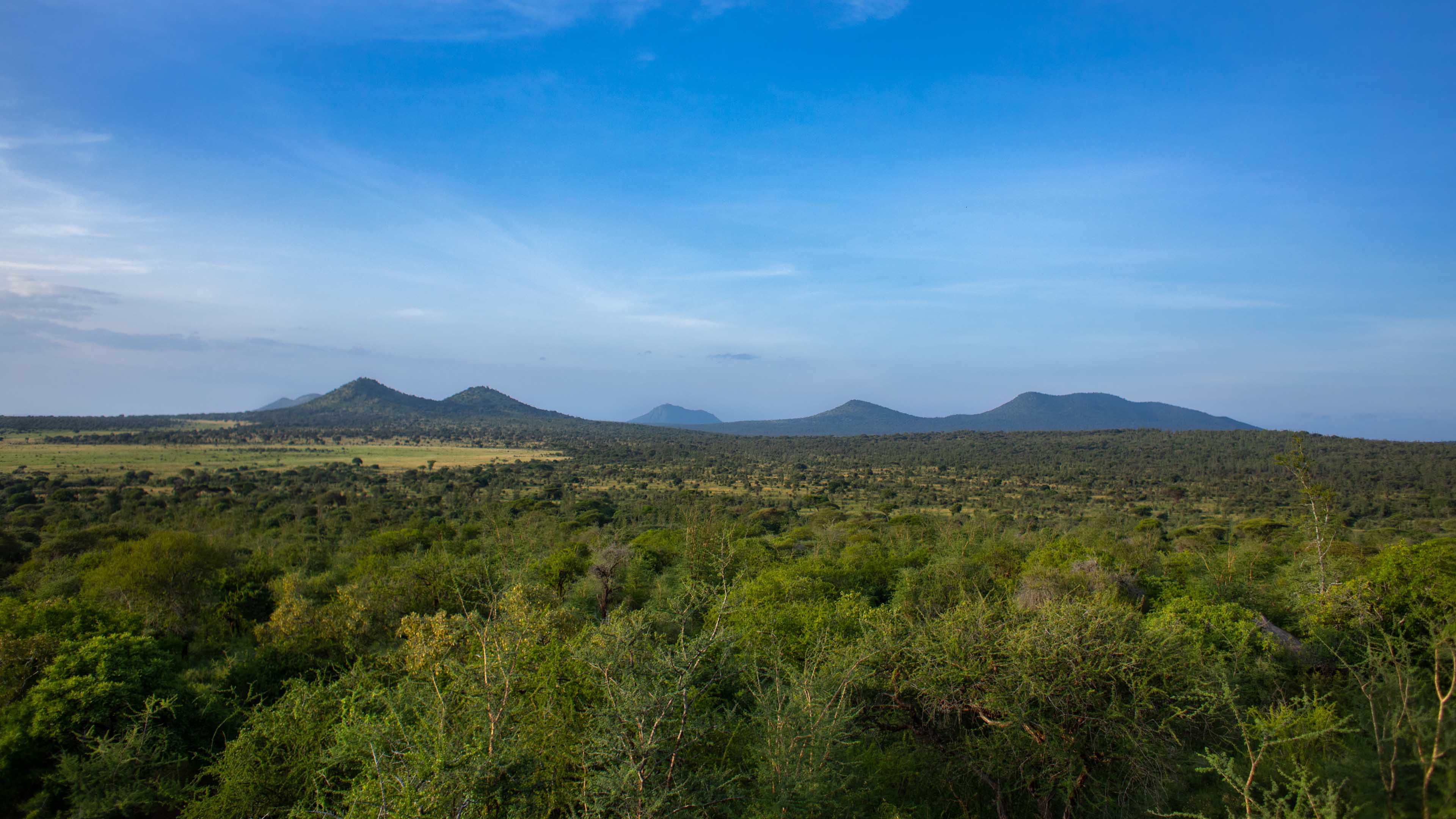

The Tarangire-Manyara Landscape stretches from the Usambara mountains to the Great Rift Valley, where a critical wildlife corridor connects habitats between Tarangire and Lake Manyara National Parks and up toward Lake Natron through the Engaruka Valley.
Wildlife movement between protected areas and human settlements underscores the importance of coexistence. In this landscape, our long-standing Warrior for Wildlife network plays a crucial role in reducing conflicts through community outreach and innovative tools like Living Walls. At the same time, promoting youth education, sustainable rangeland management, and wildlife-friendly enterprises uplift rural communities.
Combined, these investments in rangeland health, coexistence, and sustainable livelihoods contribute to positive outcomes for wildlife. According to data collected by Community Game Scouts around the Noloholo Environmental Center, 2023 was another year of stable or increasing wildlife populations, based on records of 15,000+ animals across 25 species during 92 transects. Overall, we’re pleased to see a resurgence in buffalo as well as a slight increase in impala, giraffe, and zebra for the second consecutive year.

This work in Monduli District… helps the community, whose economy depends on livestock, to benefit from it while providing an alternative source of income. This will sustain the community economically – hence protecting nature and increasing valuable grazing land.
Catherine Francis Maembe, Monduli District Wildlife Office
On the Ground in Tarangire-Manyara
Tackling Tanzania's Degraded Rangelands
Sustainable rangeland management is essential for habitat connectivity and wildlife in the region. In 2023, we collaborated with two local villages to restore 1,522 acres of degraded pasture. Monthly monitoring data showed an aggressive, unpalatable shrub was taking over native grasses that support wildlife and livestock. APW will closely monitor the treated areas and support local grazing committees with responsive management plans.
Additionally, the region’s two Conservation Technology Centers continue to play a crucial role in integrating rangeland and human-wildlife conflict data into local decision-making processes. Together with community members, our team hosted multiple meetings in 2023 to gather feedback and share data with local leadership.
Youth Scholars Forge New Futures
Post-primary education is a distant and costly dream for Tanzania’s rural youth. However, Noah Saruni, a Maasai student from Loibor Siret village and member of the local Wildlife Club, received a life-changing opportunity with a Noloholo Environmental Scholarship. Scholarship programs have already provided full-ride, six-year scholarships in top private schools to 86 students like Noah.
Noah’s education not only fuels his career aspirations but also inspires his parents, who prioritized education for their children despite never attending school themselves. As a result, Noah brought home knowledge about conservation and helped them with Swahili. This exchange encouraged Noah’s mother to start her own business in the local market, showing the power of education to create ripples of change across generations.
Protecting Wildlife Habitat With Business-Savvy Women
The Women’s Beekeeping Initiative continues to expanded its impact, improving financial stability for more women through the sales of honey and related products. This growth also benefits wildlife habitats thanks to land protection policies under Tanzanian beekeeping laws. In 2023, the program extended its reach to women’s groups in Monduli District, while local leaders in Babati District handed over the management of a community forest to the new beekeepers.
To strengthen the program’s infrastructure and scalability, we also recruited 21 women as “Queen Bees” to serve as village-level assistants, akin to the community-based Warriors for Wildlife. Queen Bees will oversee daily tasks such as data collection, reporting on hives, harvests, and sales, and sharing expertise on business practices and product development.
Community Game Scouts Win - Again!
In September, over 100 teams joined Tusk’s global Wildlife Ranger Challenge, running a 21km race while carrying 22kg of gear each. Teams made up of APW-supported Community Game Scouts secured both first and second place, marking their second victory in three years!
Though their daily tasks may not always be in the spotlight, or even in daylight, these scouts remain dedicated to protecting wildlife and helping people living alongside them in the communal lands surrounding Tarangire National Park.
Creating Opportunities for New Generations of Female Leadership
The African Women in Conservation Initiative empowers women and girls by bridging gender gaps. In 2023, three women participated in a conservation mentorship program at Noloholo, acquiring hands-on experience and essential skills across our program areas. Susan Chege, one of the mentees, subsequently interned with us and now serves as an education officer supporting Girls Clubs in rural schools.
As we excitedly await the arrival of new cohorts in 2024, APW remains committed to providing progressive training opportunities that empower women and girls pursuing environmental careers.

Adapting Living Walls for People & Predators
In the Tarangire-Manyara landscape, multiple species of carnivores are responsible for conflicts with livestock and people, including hyena, lion, and leopard. By considering the hunting behaviors of these different predators, we adapt the design of Living Walls:
- Depth to bury the chain link – to prevent hyenas from digging under
- Distance between trees and diameter of the chain link wire – to prevent lions from pushing through
- Proximity of the Living Wall to tall trees – to prevent leopards from jumping into the boma from nearby trees
Partners & Supporters









